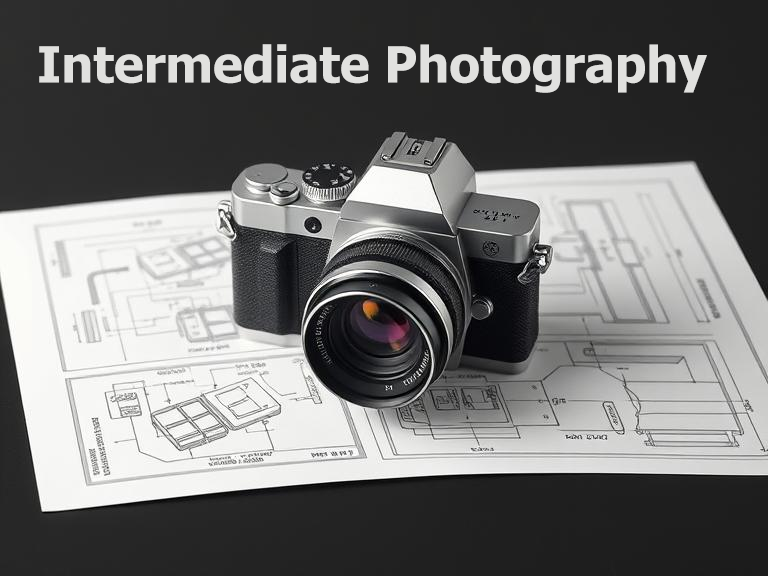Understanding Color Theory
Color theory is an essential concept for photographers aiming to enhance their visual storytelling. It refers to the guidance and principles surrounding the use of color, mixing, and the visual impact of specific color combinations.
The Basics of Color Theory
At its core, color theory involves understanding the color wheel and how different colors relate to one another. The color wheel is divided into primary colors (red, blue, and yellow), secondary colors (green, orange, and purple), and tertiary colors, which are combinations of primary and secondary colors.
Primary Colors
Primary colors are the foundation of all other colors. They cannot be created by mixing other colors together. In photography, using primary colors can create striking images because of their vividness and ability to grab attention.
Secondary Colors
Secondary colors are formed by mixing two primary colors. For instance, mixing red and yellow creates orange. Knowing how these colors relate can help you create more harmonious photographs.
Tertiary Colors
Tertiary colors are made by mixing a primary color with a secondary color. These nuanced shades can add complexity and subtlety to your images, helping to achieve the desired mood or tone.
Using Color to Set the Mood
Colors evoke emotions and feelings. By understanding what emotions certain colors can evoke, you can use them to set the mood of your photographs effectively.
Warm Colors
Warm colors such as red, orange, and yellow tend to evoke feelings of warmth and comfort but can also signal excitement, energy, and passion. Photographers might use these colors to highlight lively scenes or add warmth to a photograph.
Cool Colors
Cool colors like blue, green, and purple can create calming, soothing, or even somber moods. When you want to convey peace or tranquility, these colors can be particularly effective.
Neutral Colors
Neutral colors such as black, white, and various shades of gray can balance compositions and emphasize other colors by providing contrast. They can be used to give a photograph a classic or elegant feel.
Color Harmony Techniques
Color harmony refers to a pleasing arrangement of colors. It involves the strategic use of color combinations that are concordant or aesthetically pleasing.
Complementary Colors
Complementary colors are opposite each other on the color wheel, such as blue and orange. Using these colors together can create a high-contrast, vibrant look.
Analogous Colors
Analogous colors are located beside each other on the color wheel. They typically work well together to create serene and comfortable designs. For example, photographs capturing sunsets often utilize analogous colors.
Triadic Colors
This harmony involves three colors equidistant from each other on the color wheel. The triadic color scheme is effective in producing vibrant looks while allowing you to maintain balance and harmony.
Using Color Wheel in Composition
Consulting the color wheel during the planning stages of your shoot can be a powerful way to figure out what story you want your colors to tell. Experimenting with different harmonies can give you a better sense of the mood and message of your photos.
Color in Digital Photography
The digital photography realm offers unique tools and options for manipulating color that can greatly enhance your images.
Post-Processing and Editing
In digital photography, post-processing is where you can really let color theory shine. Software like Adobe Lightroom and Photoshop offer various color grading tools:
Hue, Saturation, and Luminance (HSL)
These sliders let you control the overall tone of your image, allowing you to pinpoint specific ranges and adjust their appearance. For example, increasing the saturation of blues can make skies appear more vivid.
White Balance Adjustments
White balance can skew your colors warm or cool. Understanding how to manipulate white balance settings can help you correct for lighting imbalances or enhance your photo’s mood.
Understanding Color Profiles
Color profiles, such as sRGB and Adobe RGB, can affect how your colors appear on different displays and prints. Familiarizing yourself with these helps ensure your images look consistent across platforms.
Practical Applications in Photography
Color theory isn’t just abstract; it’s highly practical. Here are ways to apply it in real-life photography scenarios.
Portrait Photography
When shooting portraits, consider how the subject’s clothing, background, and even eye color can be used to complement or contrast with the overall image theme. Skin tones often benefit from complementary color schemes to elevate the subject.
Landscape Photography
Color theory in landscape photography involves using natural color elements—like the bright colors of flowers or the subtle tones of a desert landscape—to draw the viewer’s eye and create harmony.
Street Photography
Street photographers often use the spontaneity of color found in urban environments to add emotion or narrative to their images. Bold, unexpected color contrasts can turn a mundane city scene into a visual story.
Experimenting with Color
Photography is an art form, and the rules of color theory can often be stretched or broken to produce unique results.
Breaking the Rules
While understanding color theory provides a framework, breaking these rules can lead to unexpected and exciting matches. Experimentation is key.
Black and White Photography
Interestingly, color theory can also deepen your understanding of black and white photography. The contrast produced by different colors converts to varying levels of gray, adding depth and impact to black and white shots.
Monochrome Exploration
Sometimes focusing on one color or its gradients can provide just as much emotive impact as multiple hues. Monochrome photography emphasizes form and texture, focusing less on hues and more on compositional elements.
Conclusion
Knowing how to leverage color in all its complexity can elevate your photography to new creative heights. Whether through the controlled application of color theory or through daring departures from it, understanding color allows you to guide the viewer’s emotional experience and create more compelling stories through your images. Keep experimenting and allow color to shape your photographic journey in diverse and vibrant ways.


